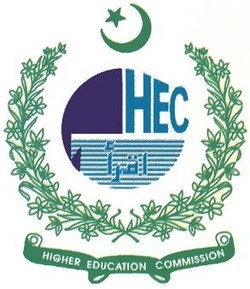Perception of Female Media Workers on Wearing Hijab/Abaya at Workplace in Pakistan
Keywords:
Hijab, Abaya, Female Media Workers, PakistanAbstract
Hijab or abaya, a symbolic dress code that the Muslim women wear across the globe and reflect it as their identity has been subject to great sociocultural and scholarly debate across the globe. Many studies have been conducted in the West about the discrimination faced by the Muslim women due to wearing hijab or abaya, as a result of Islamophobia that prevails in those societies. Following the trend, many studies have also been conducted in the Muslim countries including Pakistan about wearing hijab or abaya at workplace that predominantly reflect inclination towards discrimination faced by the working women. Adding to the global academic debate on the topic, the current study attempts to explore the perception of female media workers about wearing hijab or abaya at workplace in Pakistan through in-depth interviews. A conclusive understanding of the research states that contrary to many research studies across the globe as well as in Pakistan, environment in Pakistani media organizations regarding wearing hijab or abaya at workplace is quite conducive, but usually off-screen.
References
Nurzihan Hassim,"Hijab and the Malay-Muslim woman in media." Procedia-Social and Behavioral Sciences 155 (2014): 428-433.
Göle, Nilüfer. "The voluntary adoption of Islamic stigma symbols." Social Research: An International Quarterly 70, no. 3 (2003): 809-828.
A Pew Research Center survey (2013) Retrieved from http://www.pewforum.org/2014/07/16/howamericans-feel-about-religious-groups
Rachel Anderson Droogsma,"Redefining Hijab: American Muslim women's standpoints on veiling." Journal of Applied Communication Research 35, no. 3 (2007): 294-319.
Pakistan Population 2022. (n.d.). World Population Review:
Retrieved July 30, 2022 , from https://worldpopulationreview.com/countries/pakistan-population
International Religious Freedom Report. United States Department of State. (2021).
Noreen Saher, Anum A, Latafat A, Tasmia M, and Ameeema M. "Hijab at Workplace: Tracing Mechanism of Discrimination in Pakistan." Psychology and Education 58, no. 2 (2021): 11157-11166.
Clem Tisdell. "Poverty and Economically-deprived Women and Children: Theories, Emerging Policy Issues and Development." International Journal of Social Economics 29, no. 1/2 (2002): 73-86.
Sidra Parvez, Muhammad Zia-ur Rehman, Jawad Javed, and Irfan Raza. "Working women in Pakistan: Analysis of issues and problems." Pakistan Journal of Social Sciences 35, no. 2 (2015): 997-1011.
Zuway-R.Hong,Patricia McCarthy Veach, and Frances Lawrenz. "An investigation of the gender stereotyped thinking of Taiwanese secondary school boys and girls." Sex roles 48, no. 11 (2003): 495-504.
Uks Research Report on Women and Media. ‘More Women in Media: The Way Forward’, Wilson Center, 2009: 1-70 , https://www.wilsoncenter.org, Accessed Date: ????
Rakshanda. A. Maqsood, Bushra Chaudhry, Qamar Zia, and Asghar Cheema. "Problems of employed women at Faisalabad–Pakistan." Journal of Agriculture & Social Sciences 1, no. 3 (2005): 245-247.
Carolyn M. Byerly, "Global Report on the Status of Women in the News Media. International Women’s Media Foundation." (2011): 1-3
A. Subohi,"Moving ahead." The Dawn Media Group (2009). Retrieved from https://www.dawn.com/news/448770/empowerment-moving-ahead on 13 October 2022
Nilüfer Göle, "The voluntary adoption of Islamic stigma symbols." Social Research: An International Quarterly 70, no. 3 (2003): 809-828.
Ayesha Masood. "Doing gender, modestly: Conceptualizing workplace experiences of Pakistani women doctors." Gender, Work & Organization 26, no. 2 (2019): 214-228.
Rhys H. Williams and Gira Vashi. "Hijab and American Muslim women: Creating the space for autonomous selves." Sociology of religion 68, no. 3 (2007): 269-287.
Fatima Koura, “Hijab in the western workplace: exploring Islamic psychotherapeutic approaches to discrimination." Journal of Psychology and Behavioral Science, 4, no. 2 (2016): 80-88.
Noreen Saher, Anum A, Latafat A, Tasmia M, and Ameeema M. "Hijab at Workplace: Tracing Mechanism of Discrimination in Pakistan." Psychology and Education 58, no. 2 (2021): 11157-11166.
Ambar Ahmad, Islamic feminism-a contradiction in terms? (New Delhi: Friedrich-Ebert-Stiftung, 2015), 1-11.
Anbreen Ahmed, Perception of Female Media Workers on Wearing Hijab/Abaya at Workplace in Pakistan, Aqeel Ahmed, Islamabad, July 15, 2022, 04:00 PM
Ummul Baneen, Perception of Female Media Workers on Wearing Hijab/Abaya at Workplace in Pakistan, Aqeel Ahmed, Islamabad, July 17, 2022, 05:30 PM
Rizwana Syed, Perception of Female Media Workers on Wearing Hijab/Abaya at Workplace in Pakistan, Aqeel Ahmed, Islamabad, July 22, 2022, 02:30 PM
Fatima Hassan Zaidi, Perception of Female Media Workers on Wearing Hijab/Abaya at Workplace in Pakistan, Aqeel Ahmed, Islamabad, July 22, 2022, 06:30 PM
Ayesha Nawaz, Perception of Female Media Workers on Wearing Hijab/Abaya at Workplace in Pakistan, Aqeel Ahmed, Islamabad, July 23, 2022, 03:30 PM
Rumana Ali, Perception of Female Media Workers on Wearing Hijab/Abaya at Workplace in Pakistan, Aqeel Ahmed, Islamabad, July 24, 2022, 05:00 PM
Published
How to Cite
Issue
Section
Copyright (c) 2022 Al-Qamar

This work is licensed under a Creative Commons Attribution 4.0 International License.


















